Tomb 16
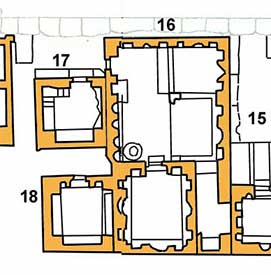
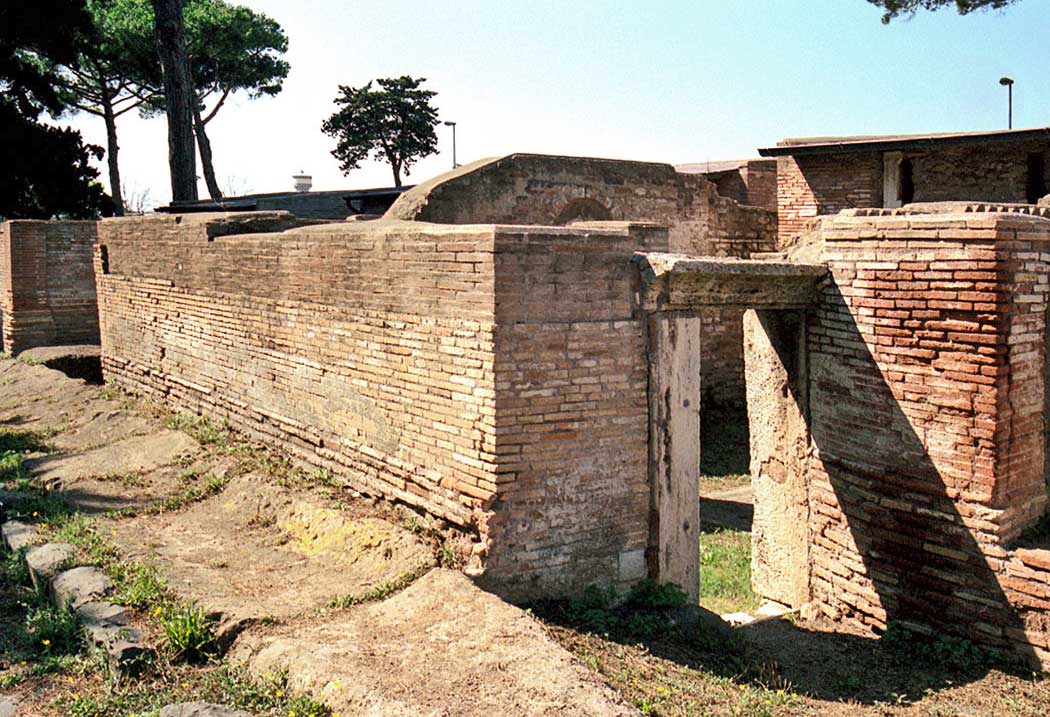
Originally tomb 16 consisted of a burial chamber only. Although the tomb was located a little bit away from the street, it was facing the Via Severiana.
On the left side the tomb was detached, and there was an alley between tombs 15 and 16.
Later a courtyard was built enclosing the area between tomb 16 and the Via Severiana as well as the alley. The entrance of the enclosure faced the north instead of the main street. A part of the enclosure had a roof which was supported by brick columns. One of the columns still remains in the middle of the courtyard.

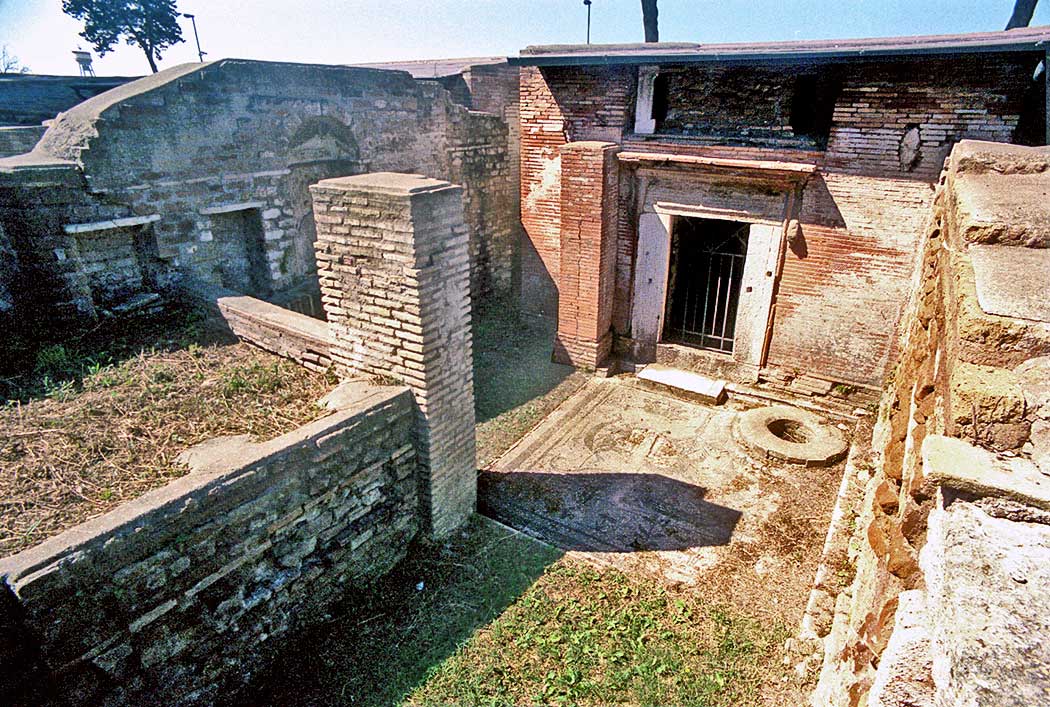
The level of the floor of the enclosure is a little bit higher than that of the original burial chamber. In front of the burial chamber still lies a very nice black and white mosaic picturing the river Nile with several animals and a boat manned by pygmies. This Nilotic scene was a popular funeral picture in those days as a counterpart of the Dionysian elements often used in tombs. Dionysian pictures are also plentiful used in the burial chamber of tomb 16 as we shall see later on. Next to the mosaic is a round well with a marble rim.
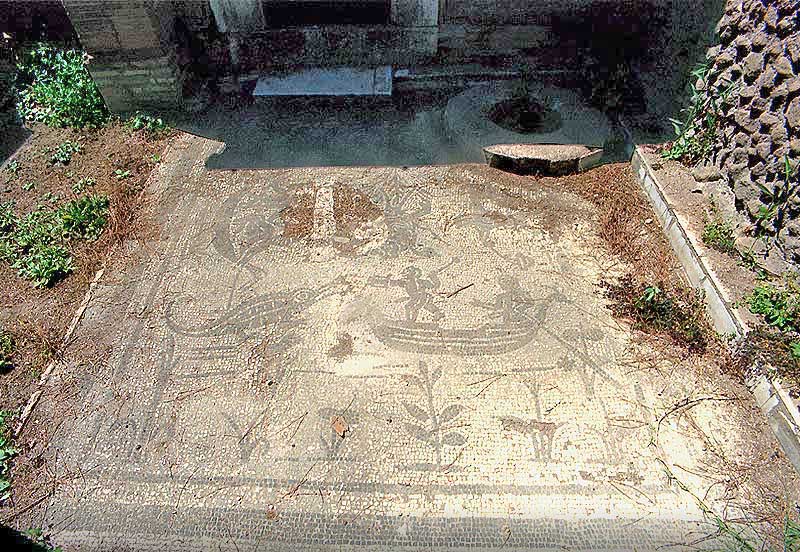
Above the entrance of the enclosure there was an inscription on a marble slab which gives us more information about this tomb1:
ET SENTIO D(is) STATIANO M(anibus) ALVMNO SVO
PVBLIVS CORNELIVS FORTVNATVS
TERENTIO BITALINI ET SENTIAE LAIDI
ME DONAVI SARCOFAGA N(umero) XII IN QIBVS TRIA
DEBET FACERE SVIS INPENDIS CVNDISSERO
PARTE DESTRA BIA FLABIA DATA CLABE ET DO
NATA ESSE BOLO QE SVPRA ISCRITA SVN[T]
ET AB EREDE MEV LIBERTI LIBERTABVSQ(ue)
Publius Cornelius Fortunatus gave to Terentius Vitalinus, to his Sentia Lais and to Sentius Statianus, his foster-son and heir of the founder, his freed slaves and their descendants, 12 sarcophagi. Three of them shall be paid for by Terentius Vitalinus, after he has received the key of the tomb on the right side of the via Flavia2.
(The first and the eighth line were added later. Because of a lack of space, text was added around the D and the M of Dis Manibus).
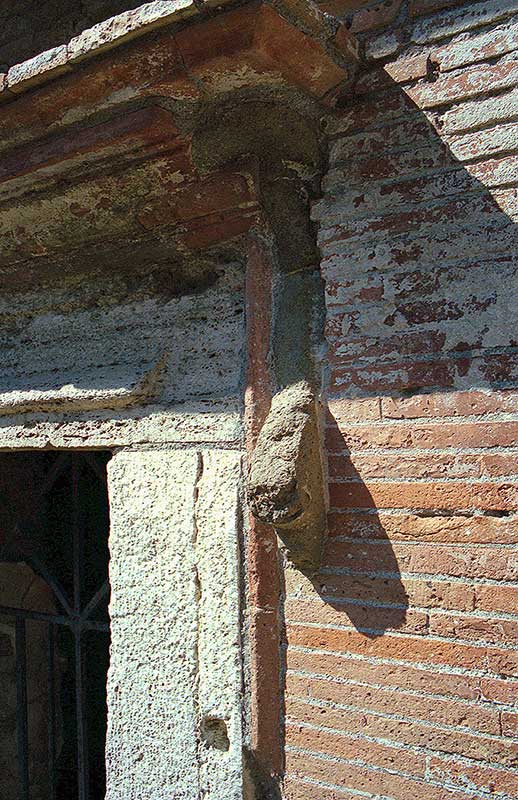
to the door
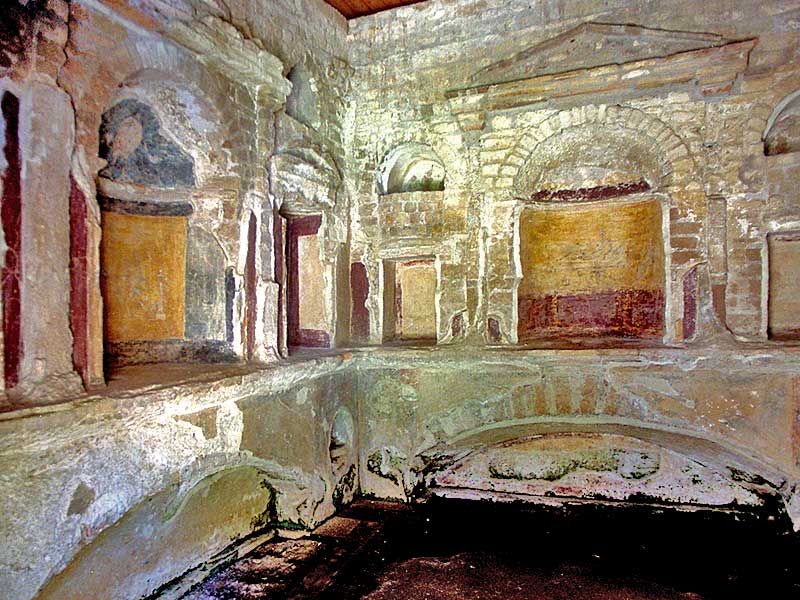
On both sides of the door is a dolphin cut out of tuff.
The burial chamber is equipped for a mixed form of burial. There are arcosolia in the lower parts of the walls and large niches flanked by smaller ones for urns in the upper parts.
The floor, now in a bad condition, had a mosaic with a marble border. The mosaic depicted flowers and amphorae.
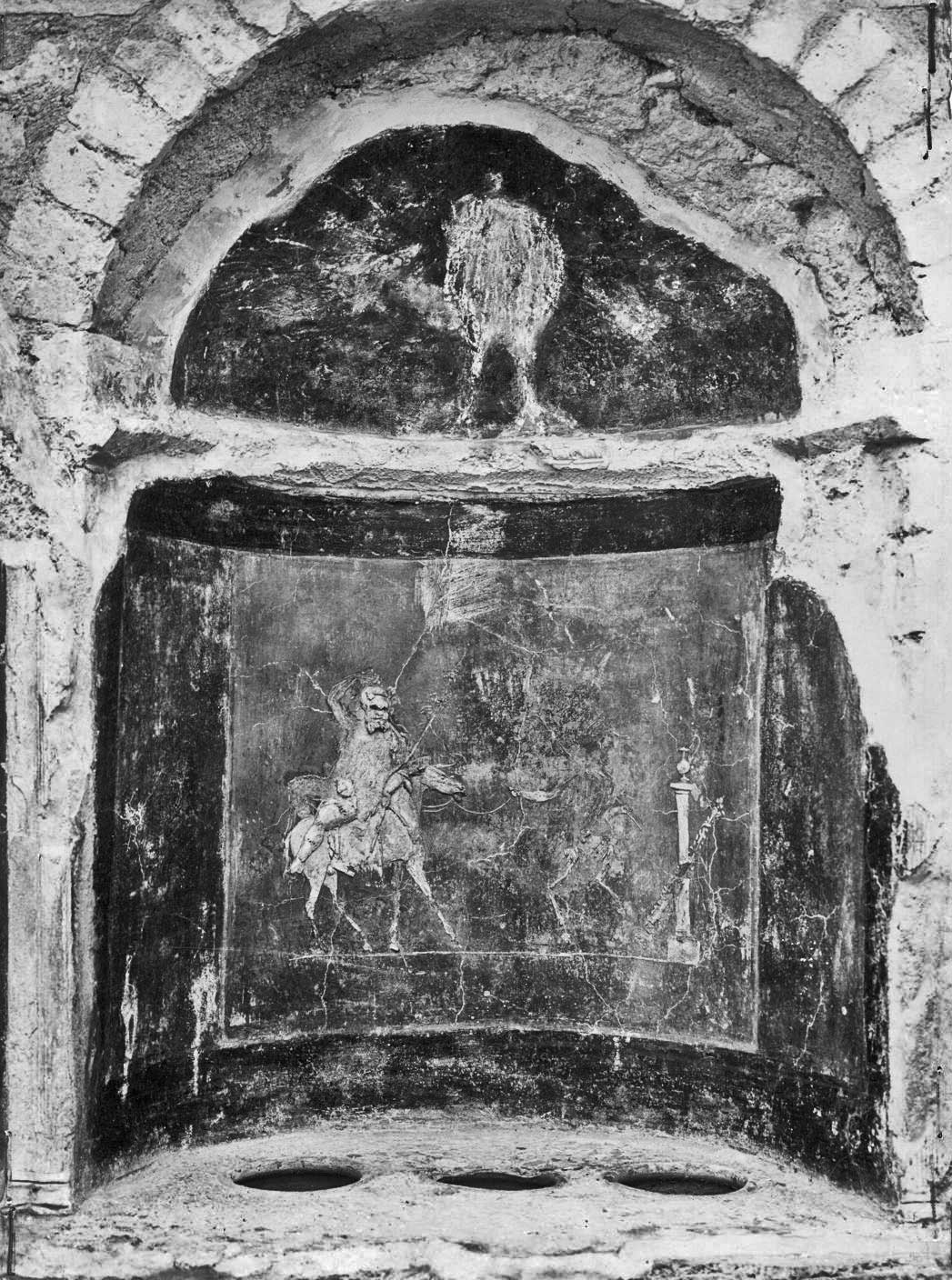
The many banquet scenes bear witness to the belief in a heavenly banquet. Other examples can be found in the coloured floor mosaic of tomb 88, in a painting in tomb 57, and on the sarcophagus from tomb 11.
In the hindmost niche of the left wall there is another Dionysian scene in stucco relief. The old educator and companion of Dionysus, Silenus, with a beard and a tired glance in his eyes, is sitting on a donkey next to a small column. In his hand is a flower rod. Opposite stands Pan, goat-footed and horned. The latter carries a sheep-hook over his shoulder. The ceiling of the niche was decorated with a painting of a peacock3.
The central niche in the left wall is flanked by niches with paintings of the Fates. In the one on the left side Clotho was depicted (now in the museum of Ostia). She is dressed in a purple dress and a green coat. In her hands are a spool and a bobbin with thread.
The niche on the right side shows a woman with a purple dress and a dark yellow coat. Probably this is Atropos or Lachesis, although the attributes in her hands are not clear because of the bad condition of this painting.
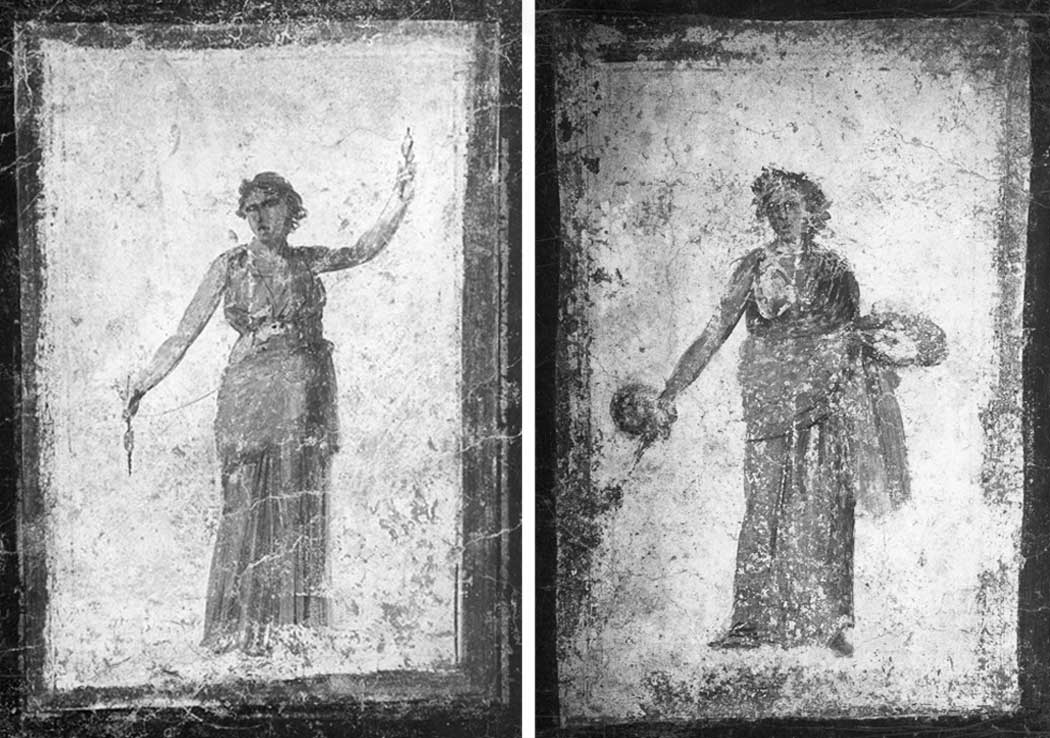
The central niche on the right side had a Dionysian painting too: two men with sheep-hooks over their shoulder. Unfortunately, this one has been preserved badly. On the ground lies a fallen basket from which a snake has crawled. The painting is completed by a goat with raised forelegs. In this niche too was a peacock in the upper part.
In the niches next to the central niche, analogous to the niches on the opposite wall, two women have been painted. One of them is the third Fate carrying a balance. The attributes of the other woman are not so clear. She could be Fortuna, often depicted next to the Fates. Of this last painting little has been preserved.
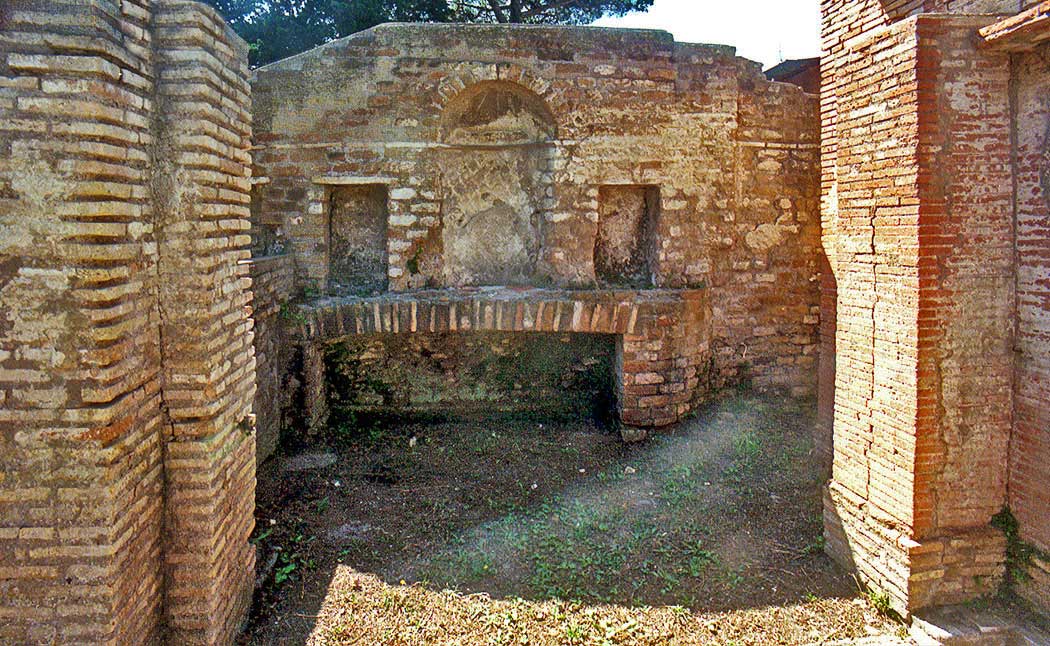
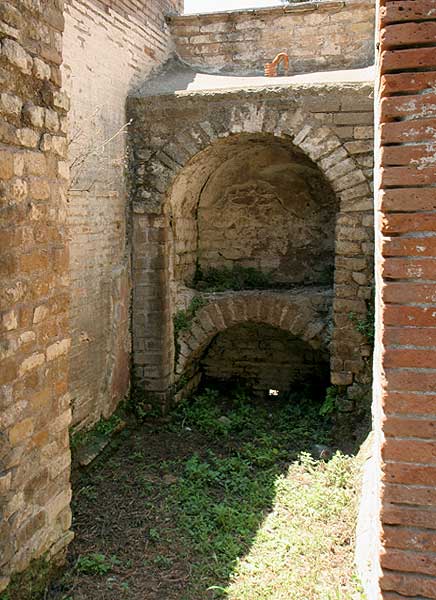
In the central niche of the left wall of the enclosure three human figures were depicted, two female figures and one nude, male figure. They could be Heracles and Alcestis or Hermes and Eurydice.
Further on, between the left wall of the burial chamber and the southern wall of the enclosure, is a furnace used for preparing funeral meals. The whole enclosure was paved with a mosaic floor below which room was created for sarcophagi in later times.
- Sources
- Russel Meigs - Roman Ostia, At the Clarendon Press 1973
- Guido Calza - Necropoli nell'Isola Sacra'(1940)
- Dr. Jan Theo Bakker.
- Hilding Thylander - Inscriptions du port d'Ostie (Lund C W K Gleerup 1952).
- Ida Baldassarre, Irene Bragantini, Chiara Morselli and Franc Taglietti - Necropoli di Porto, Isola Sacra (Roma 1996).
- Notes
- 1:The inscription, here described, dates from about 314 AD and has been made after the reuse of the tomb. The marble plate on which she is cut out dates from the time of Hadrian. On the back-side of the plate you can still see a remainder of the text from the original grave. A certain [P. Corneli]us Fortu[natus] is mentioned. Perhaps it is the same person as the one on the front of the plate (H. Thylander: “Inscriptions du port d’Ostie”).
- 2:It is often stated that the Via Severiana was called Via Flavia since the time of Constantine. It is also possible that the road was never called Via Severiana, but Via Flavia since the late first century AD.
- 3:The description and explanation of the scenes are given by professor Calza. The condition of the paintings was much better when they were found than it is today. (This black/white picture is made directly after the excavations). The tomb is closed for the public.
Waardeert u ons werk?
Wordt lid van Roman Ports en ontvang het boek of doe een donatie!
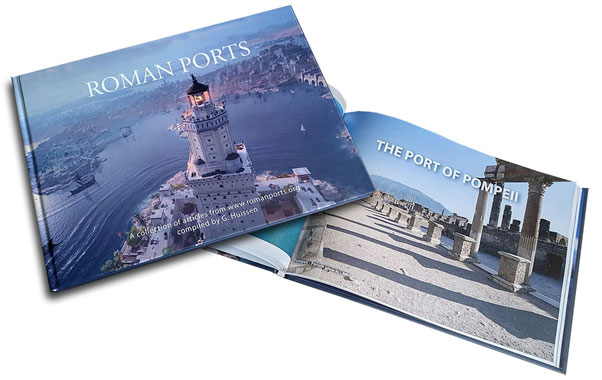 Wordt lid en steun ons
Wordt lid en steun ons
Isola Sacra Index (N)

Speciale sectie over de Romeinse begraafplaats van Portus (Engels)....
Lees meer...De teruggevonden vloot van Pisa

In 1998 werd bij toeval een ongelooflijk archeologisch erfgoed ontdekt in de buurt van het station Pisa San Rossore....
Lees meer...Leptiminus
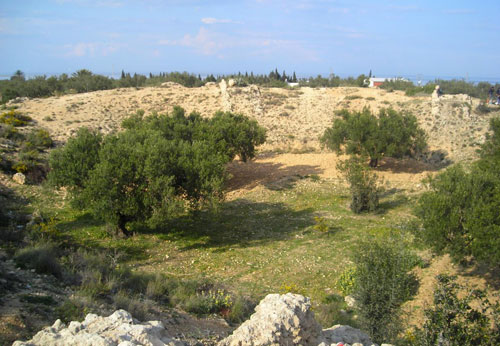
Op de plaats van het huidige Lamta aan de oostkust van Tunesië lag al in de oudheid een havenstad met de naam Leptis Minor ....
Lees meer...Romeins Zeehandelsrecht

Het Romeinse recht is het fraaiste monument dat Rome aan West-Europa heeft nagelaten....
Lees meer...Sullecthum (Salakta)

In de Sahel, in de Tunesische provincie Madhia vinden we aan zee het kleine stadje Salakta....
Lees meer...
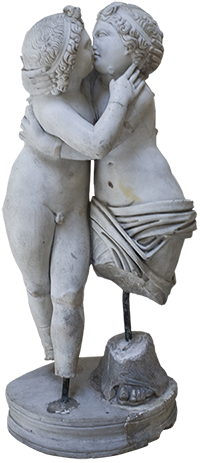 We are committed to providing versions of our articles and interviews in several languages, but our first language is English.
We are committed to providing versions of our articles and interviews in several languages, but our first language is English.